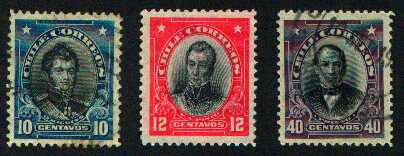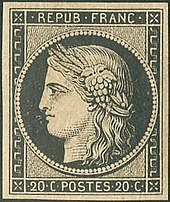
Haiti has been independent from France since 1804 after a slave revolt. During its 200 year history, Haiti has had 32 coups and Haiti tops the league in perceived domestic corruption - corruption which has affected its stamps (in the form of forgeries and reprints).
The inaugural issue for Haiti was a six stamp imperforate set with "Liberty Head" as the design. The stamps feature the head of an allegorical figure of Liberty in left-facing profile. It is an interesting design, because some believe the head shown on the stamp has two faces. The left-facing profile is that of a white woman, and the right-facing profile is that of a black woman, supposedly the wife of the president of Haiti, Gen. Louis Etienne Felicite Salomon.
This was the first and last design that imitated the "French" model, as the rest of the issues for the next 25 years either had "Coat of Arms" or Presidents as the image.





